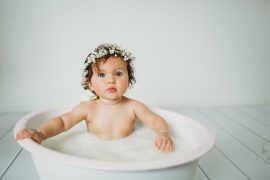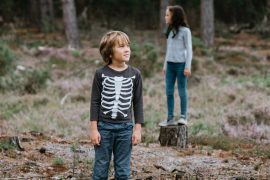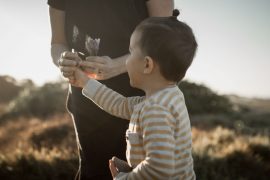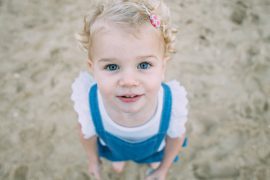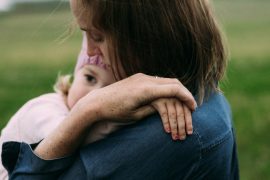If you have children at different developmental stages, ie. a child who is enjoying playing with Lego, beads, or other loose parts alongside a baby or toddler who is still exploring everything by putting it in their mouth, strict boundaries around where the toys with small parts will live are necessary. Large trays with a thick rim are great for letting older children play with smaller objects as they can be moved onto a table or higher surface when their siblings are around. If your older children have their own rooms, consider keeping these toys in there – and keeping little ones out.
Note: what a safe home will look like will differ from family to family. For example, we chose not to use stair gates for Frida as I felt able to supervise her each time she wanted to use the stairs, until she had reliably learnt to use them safely herself. However, many families I know feel more relaxed knowing that the stair gate is there, which allows them to feel less stressed in their daily life with their child. There is no one right or wrong way to organise your home! We will all have different levels of tolerance for risk, differing reserves of patience, and our children will all have different temperaments. Do what feels right for your family.
Independence
As well as being safe, I believe that “yes spaces” should encourage independence.
This greatly reduces frustration all round as your children can help themselves without a need to ask you first, and you can get on with whatever you are doing with fewer interruptions.
This also gives your children more power and autonomy over their own life; for example, if snack foods are in reach, then your children can choose to snack when they are hungry, but if the snacks are kept high up out of reach, then the power lies with you to allow the snack. Even if you always say yes, the power still rests with you.
To encourage independence you could:
- Have a clear space for your baby to practise moving and crawling
- Have low, sturdy furniture or a pull-up bar for your infant to pull themselves up on
- Organise a small toddler wardrobe so your child can select their own clothing from a few simple options
- Place a mirror low down so your young child can observe themselves
- Have child-size furniture that your toddler can get in and out of by themselves
- Keep toys in shallow baskets on low shelves and books in low open-faced bookshelves so your child can find what they want to play with, and later learn to put toys and books back in their proper place
- Create a small snack station – a few crackers in an easy-to-open container is fine to start with
- Consider giving your toddler safe access to water with a plastic water dispenser
- Put step-stools at various points in your home, such as by sinks and the kitchen counter, so your child can be involved in self-care and cooking
One of the best ways to give your child independence is to simply make sure their space is safe, and then get out of their way and let them explore!
Stress-free
As I mention above, each family and each parent will have their own limits when it comes to risk, safety, and independence – and this will probably depend on their children’s temperaments and personality too. Although I am a fan of creating an environment where my daughter can have as much freedom as possible – think open access to paint, glue, scissors, water, knives, furniture she can climb on – I recognise that this may not work for everyone at first, or perhaps ever.
If your children having access to these sorts of things is stressful for you, it’s OK not to do it! Having a relaxed parent around, rather than one who is stressed out on tenterhooks waiting for someone to make a mess, is always going to be the better option. Focus on the things you ARE happy to change, and you can always return to open-access paints another day if you change your mind.



